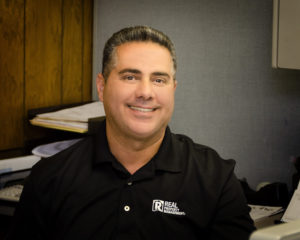Spring Is A Great Time For HVAC Maintenance

By RPM Central Valley
As the weather warms up in the Central Valley, spring is also a great time for HVAC maintenance because your tenants are going to be using their air conditioners heavily in the coming months so it’s best to make sure that they are functioning correctly by doing the following.
Step #1: Inspect
The first thing that you or your HVAC technician should do is to visually inspect your entire HVAC system, looking for things such as rust, corrosion from moisture, condensation, or leaking ductwork. This is a great example of an HVAC duct in disrepair–these leaky ducts can lower the efficiency of your air conditioner, making it eat up more power and do its job less effectively in the long run.
With an HVAC system, small problems can quickly become big ones that make your system less efficient or even cause it to fail entirely.
The units themselves will need to be inspected as well, particularly for damage and dirt build-up on the fins. Even a well-cared-for unit can be damaged inadvertently by a stray bird or stick tossed by a storm.
Step #2: Clean
It’s time to clean the equipment after the HVAC system has been thoroughly inspected. Your HVAC technician will clean the evaporator coil, the drains and lines, and the condensate pan to ensure that each part of the system is running at peak performance. A dirty evaporator coil can make it harder for your A/C to cool the house, and clogged water lines can cause floods inside your home.
Your technician will also inspect all of the connections to make sure that there are no potential leak points.
Step #3: Check
The next step in your spring HVAC inspection is something that will need to be done by your HVAC technician. They will need to inspect and test all the electrical components in the HVAC system.
Inspect wiring for frayed connections or damaged insulation. Tighten any loose connections, and replace any damaged wires before your unit goes into full service for the spring.
They will also test the circuit boards that run the system, and the capacitors to ensure that they’re doing their job.
Step #4: Test
The last step is to test your HVAC system as a whole. This will include checking the coolant levels during various cycles; making sure that the run controls function properly; and ensuring that the compressor is functioning at peak levels. Your technician will also test the safety switches to ensure that the system shuts off properly when there’s a power failure.
This might sound like a comprehensive inspection, but it can be completed in just a few hours by a well-trained technician.
Get Property Management Here
For professional property management in the Central Valley contact RPM today by calling us at (209) 572-2222 or CLICK HERE to connect with us online.

